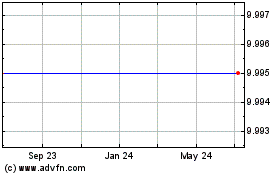CORRECT: UPDATE: For-Profit Colleges Rally As Test Looks Easy
June 02 2011 - 12:22PM
Dow Jones News
Stocks of for-profit college operators soared Thursday after the
U.S. Department of Education released a softer-than-expected
regulation governing career training programs, known as the
"gainful employment" rule.
The long-awaited rule punishes programs for graduating students
with heavy debt loads by eliminating their access to federal
financial aid dollars, an attempt to ensure the programs are
preparing students for gainful legitimate jobs. But it is less
severe than a draft released last summer, giving programs more
opportunities to right themselves if they run afoul of the
measure.
Shares of ITT Educational Services Inc. (ESI) jumped 19% to
$83.87, while Corinthian Colleges Inc. (COCO) gained 30.3% to $5.20
and Education Management Corp. (EDMC), another school believed to
be particularly vulnerable to punishment under the prior proposal,
gained 25.4% to $25.46.
"It's a massive win," said Bob Wetenhall, an analyst at RBC
Capital Markets. "Many investors now believe that the sector is
investible, due to a combination of reasonable valuations and the
removal of the regulatory overhang. I think it's definitely safe to
swim."
Most schools said they are still reviewing the regulation, which
runs more than 400 pages.
For-profit colleges enroll about 12% of all students. They
receive nearly $30 billion in federal aid, about one-fourth of the
total, and their graduates contribute slightly less than half of
federal student-loan defaults.
One reason for the relief is that under the rule, which goes
into effect in July 2012, no program could lose eligibility for
financial aid until at least 2015. Programs must fail the debt-load
tests three times in four years in order to be disqualified.
To remain eligible for aid, a program must pass one of three
tests: at least 35% of former students are paying down their loan
balances by at least $1, or a typical graduate's loan payment
doesn't exceed 30% of his or her discretionary income or 12% of
total earnings. The rule applies to most for-profit programs and
certificate programs at nonprofit and public institutions.
While investors are cheering, some in Washington say the rule
didn't go far enough.
The rule is "a modest and important first step," Sen. Tom Harkin
(D., Iowa) said in a prepared statement. He has been leading a
series of Senate hearings on the industry, looking at their
recruiting practices, graduate debt loads and academic value.
Pauline Abernathy, vice president of the nonprofit Institute for
College Access and Success, also said it is a good first step.
Still, "It is substantially weaker than the draft rule and it will
take longer to protect students and taxpayers from the worst of the
worst programs."
According to Department of Education calculations, 18% of
for-profit programs are expected to fail the debt tests at some
point, with 5% ultimately losing eligibility. Across all
institutions, those figures are 8% and 2%, respectively.
Strayer Education Inc. (STRA), whose programs had been in some
danger of losing eligibility under the earlier rule draft, should
be in the clear now, analysts say. And because the debt-to-income
ratios and repayment rates won't be calculated until a few years
into repayment and include longer amortization terms, schools with
an emphasis on advanced degrees stand to fare well. Their graduates
may leave with more debt than students in associate's degree or
certificate programs, but they also tend to earn more once they
start their careers. That bodes well for Strayer, as well as
Capella Education Co. (CPLA) and Grand Canyon Education Inc.
(LOPE), BMO Capital Markets said in an investor note Thursday.
Though investors are expressing relief in the wake of the rule's
release, schools aren't entirely free of challenges. A slew of
states are investigating the schools, and new-student enrollments
are declining as schools tighten admissions standards. Also, if
schools cut their tuition to minimize debt and better comply with
the gainful employment rule, they risk running afoul of the
so-called 90/10 rule that limits federal aid to 90% of total
revenue. Many are already bumping up against that ceiling.
Meanwhile, potential cuts to Pell grant funding, an aid program for
low-income students, could have an outsized effect on for-profit
schools that have a high concentration of such students.
"Clarity on the almost-two-year gainful employment overhang is a
notable event," Height Analytics wrote in a client note. "But
critical regulatory issues will continue to impact the sector."
-By Melissa Korn, Dow Jones Newswires; 212-416-2271;
melissa.korn@dowjones.com
Apollo Education Group, Inc. (NASDAQ:APOL)
Historical Stock Chart
From May 2024 to Jun 2024

Apollo Education Group, Inc. (NASDAQ:APOL)
Historical Stock Chart
From Jun 2023 to Jun 2024
